
How to Use TB6612FNG: Examples, Pinouts, and Specs
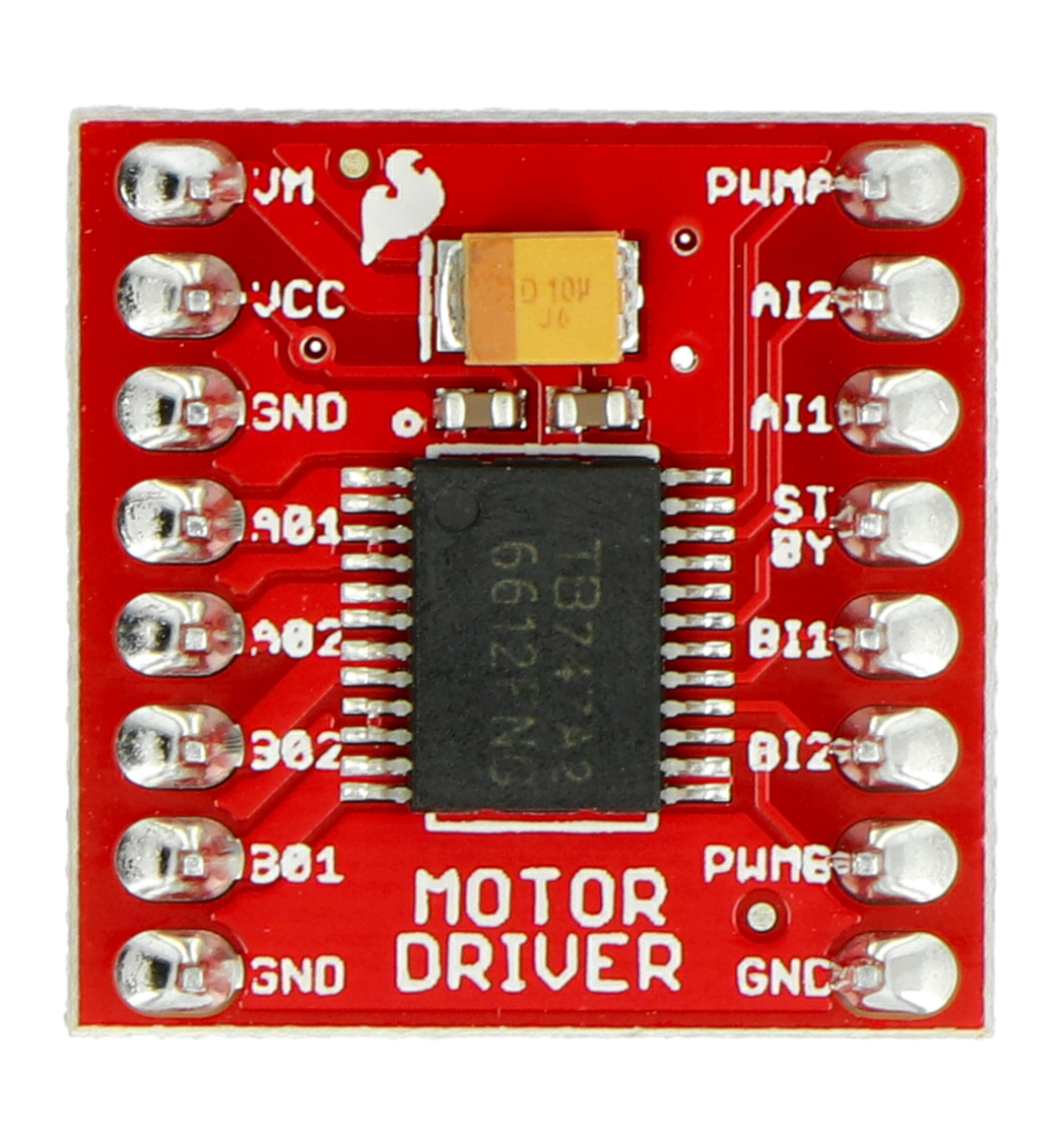
 Design with TB6612FNG in Cirkit Designer
Design with TB6612FNG in Cirkit DesignerIntroduction
The TB6612FNG is a dual H-bridge motor driver IC designed for controlling two DC motors or one stepper motor. It supports PWM (Pulse Width Modulation) for precise speed control and direction management. With a compact design and robust features like thermal shutdown protection, this IC is ideal for robotics, automation, and other motor control applications.
Explore Projects Built with TB6612FNG
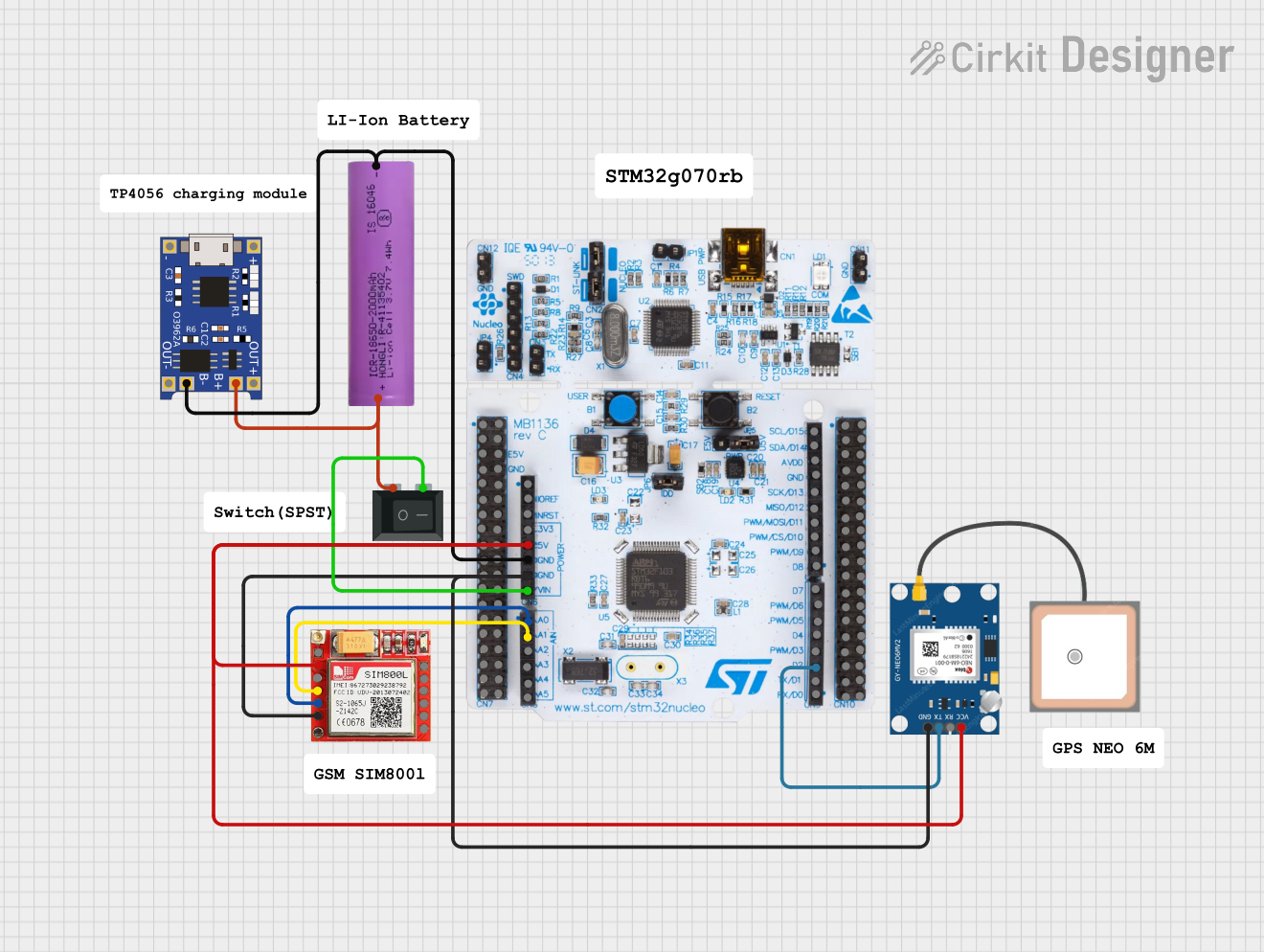
 Open Project in Cirkit Designer
Open Project in Cirkit Designer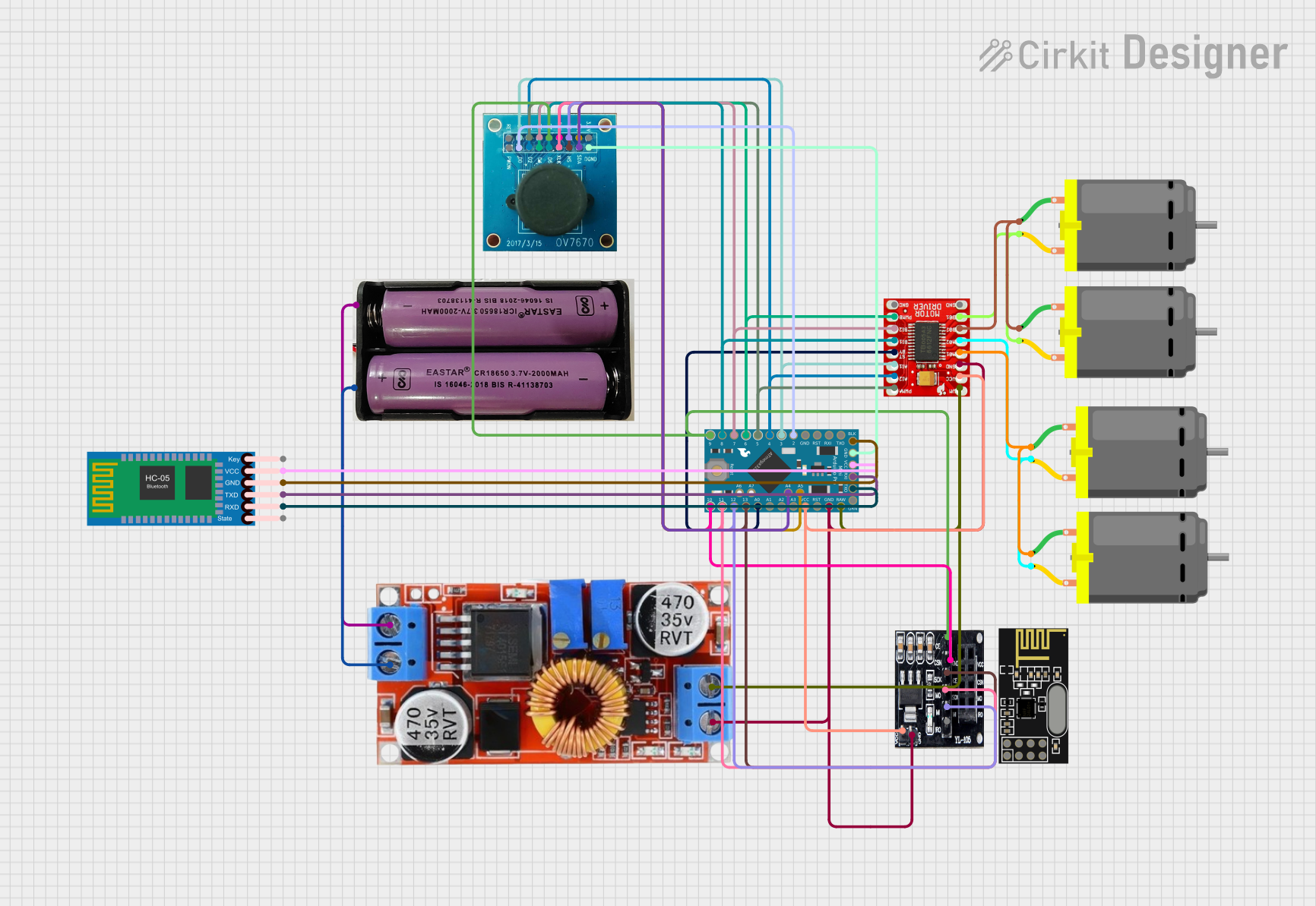
 Open Project in Cirkit Designer
Open Project in Cirkit Designer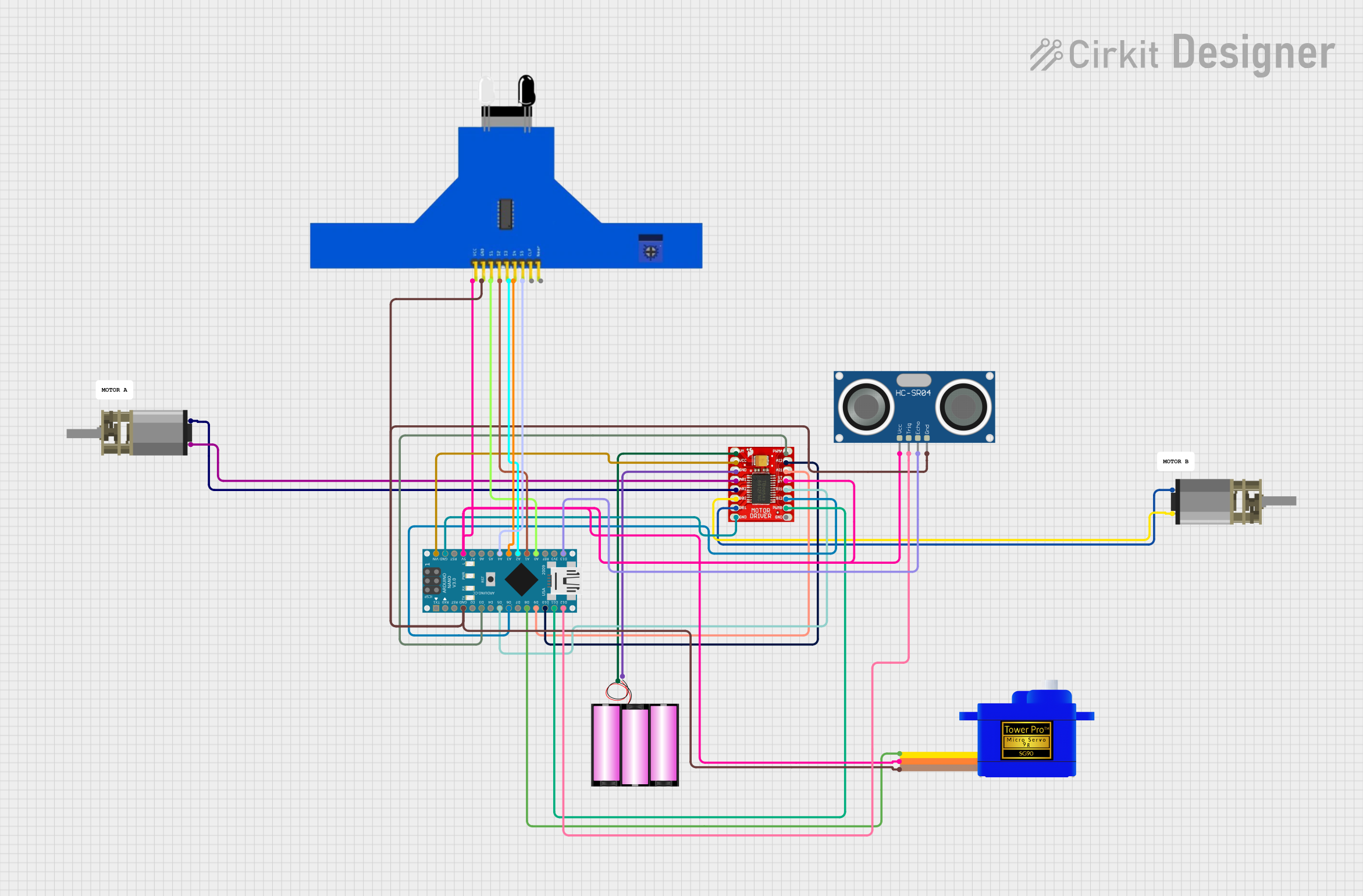
 Open Project in Cirkit Designer
Open Project in Cirkit Designer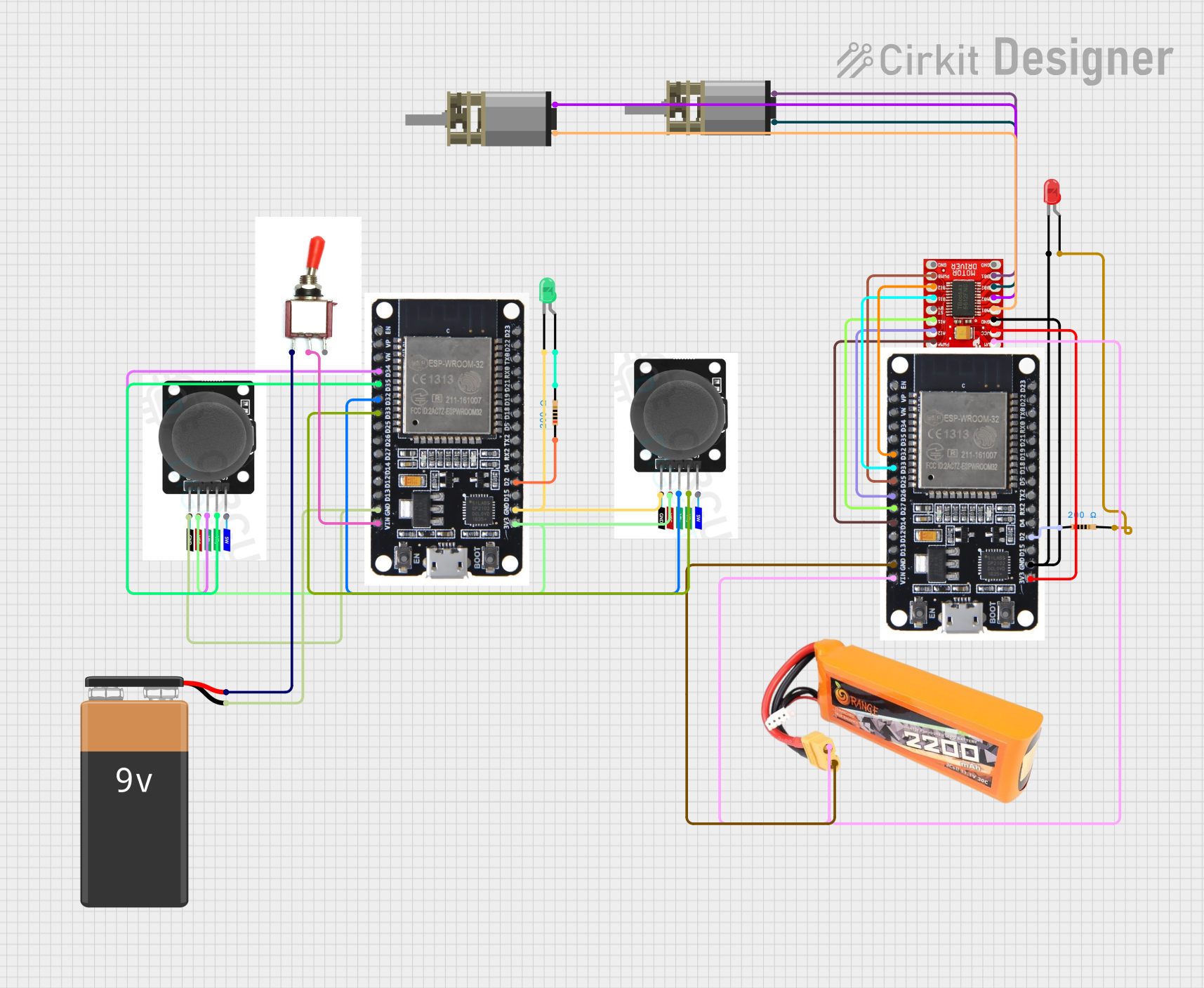
 Open Project in Cirkit Designer
Open Project in Cirkit DesignerExplore Projects Built with TB6612FNG

 Open Project in Cirkit Designer
Open Project in Cirkit Designer
 Open Project in Cirkit Designer
Open Project in Cirkit Designer
 Open Project in Cirkit Designer
Open Project in Cirkit Designer
 Open Project in Cirkit Designer
Open Project in Cirkit DesignerCommon Applications
- Robotics and automation systems
- Remote-controlled vehicles
- Conveyor belts and industrial machinery
- DIY electronics projects
- Stepper motor control for 3D printers and CNC machines
Technical Specifications
Key Technical Details
- Operating Voltage (Vcc): 2.7V to 5.5V
- Motor Voltage (VM): 4.5V to 13.5V
- Output Current (per channel): 1.2A (continuous), 3.2A (peak)
- Control Method: PWM (up to 100 kHz)
- Standby Current: 1 µA (typical)
- Thermal Shutdown Protection: Yes
- Overcurrent Protection: Yes
- Operating Temperature Range: -20°C to +85°C
- Package Type: HTSSOP-20
Pin Configuration and Descriptions
The TB6612FNG has 20 pins, with the following configuration:
| Pin Number | Pin Name | Description |
|---|---|---|
| 1 | AIN1 | Input signal for Motor A (controls direction) |
| 2 | AIN2 | Input signal for Motor A (controls direction) |
| 3 | PWMA | PWM input for Motor A (controls speed) |
| 4 | A01 | Output 1 for Motor A |
| 5 | A02 | Output 2 for Motor A |
| 6 | VM | Motor power supply (4.5V to 13.5V) |
| 7 | VCC | Logic power supply (2.7V to 5.5V) |
| 8 | STBY | Standby control (active HIGH) |
| 9 | BIN1 | Input signal for Motor B (controls direction) |
| 10 | BIN2 | Input signal for Motor B (controls direction) |
| 11 | PWMB | PWM input for Motor B (controls speed) |
| 12 | B01 | Output 1 for Motor B |
| 13 | B02 | Output 2 for Motor B |
| 14 | GND | Ground |
| 15 | NC | No connection |
| 16 | NC | No connection |
| 17 | NC | No connection |
| 18 | NC | No connection |
| 19 | NC | No connection |
| 20 | NC | No connection |
Usage Instructions
How to Use the TB6612FNG in a Circuit
Power Connections:
- Connect the VM pin to the motor power supply (4.5V to 13.5V).
- Connect the VCC pin to the logic power supply (2.7V to 5.5V).
- Connect the GND pin to the ground of the circuit.
Motor Connections:
- For Motor A, connect the motor terminals to A01 and A02.
- For Motor B, connect the motor terminals to B01 and B02.
Control Signals:
- Use the AIN1 and AIN2 pins to control the direction of Motor A.
- Use the BIN1 and BIN2 pins to control the direction of Motor B.
- Apply a PWM signal to PWMA and PWMB to control the speed of Motor A and Motor B, respectively.
Standby Mode:
- Set the STBY pin HIGH to enable the IC. Set it LOW to put the IC in standby mode.
Important Considerations and Best Practices
- Use decoupling capacitors (e.g., 0.1 µF and 100 µF) between VM and GND to reduce noise and stabilize the power supply.
- Ensure the motor's current does not exceed the IC's maximum ratings (1.2A continuous, 3.2A peak).
- Use heat sinks or proper ventilation if operating near the maximum current to prevent overheating.
- Avoid leaving unused input pins floating; connect them to GND or VCC as needed.
Example: Using TB6612FNG with Arduino UNO
Below is an example code to control two DC motors using the TB6612FNG and an Arduino UNO:
// Define motor control pins
#define AIN1 7 // Motor A direction control pin 1
#define AIN2 6 // Motor A direction control pin 2
#define PWMA 5 // Motor A speed control (PWM) pin
#define BIN1 4 // Motor B direction control pin 1
#define BIN2 3 // Motor B direction control pin 2
#define PWMB 2 // Motor B speed control (PWM) pin
#define STBY 8 // Standby control pin
void setup() {
// Set motor control pins as outputs
pinMode(AIN1, OUTPUT);
pinMode(AIN2, OUTPUT);
pinMode(PWMA, OUTPUT);
pinMode(BIN1, OUTPUT);
pinMode(BIN2, OUTPUT);
pinMode(PWMB, OUTPUT);
pinMode(STBY, OUTPUT);
// Enable the motor driver by setting STBY HIGH
digitalWrite(STBY, HIGH);
}
void loop() {
// Motor A: Forward at 50% speed
digitalWrite(AIN1, HIGH);
digitalWrite(AIN2, LOW);
analogWrite(PWMA, 128); // 50% duty cycle (0-255)
// Motor B: Reverse at 75% speed
digitalWrite(BIN1, LOW);
digitalWrite(BIN2, HIGH);
analogWrite(PWMB, 192); // 75% duty cycle (0-255)
delay(2000); // Run motors for 2 seconds
// Stop both motors
analogWrite(PWMA, 0);
analogWrite(PWMB, 0);
delay(2000); // Wait for 2 seconds
}
Troubleshooting and FAQs
Common Issues and Solutions
Motors Not Running:
- Ensure the STBY pin is set HIGH to enable the IC.
- Verify that the power supply voltage for VM and VCC is within the specified range.
- Check the connections to the motor terminals and control pins.
Overheating:
- Ensure the motor's current does not exceed the IC's maximum ratings.
- Use proper heat dissipation methods, such as heat sinks or fans.
Erratic Motor Behavior:
- Add decoupling capacitors between VM and GND to reduce noise.
- Verify the PWM signal frequency and duty cycle.
No Response to PWM Signals:
- Confirm that the PWM pins are correctly connected to the microcontroller.
- Check the microcontroller's PWM configuration and ensure the signal is being generated.
FAQs
Can the TB6612FNG drive stepper motors? Yes, the TB6612FNG can control a bipolar stepper motor by using both H-bridges.
What happens if the motor current exceeds 1.2A? The IC has overcurrent protection and thermal shutdown features to prevent damage. However, prolonged overcurrent conditions should be avoided.
Can I use the TB6612FNG with a 3.3V microcontroller? Yes, the TB6612FNG supports logic levels as low as 2.7V, making it compatible with 3.3V systems.